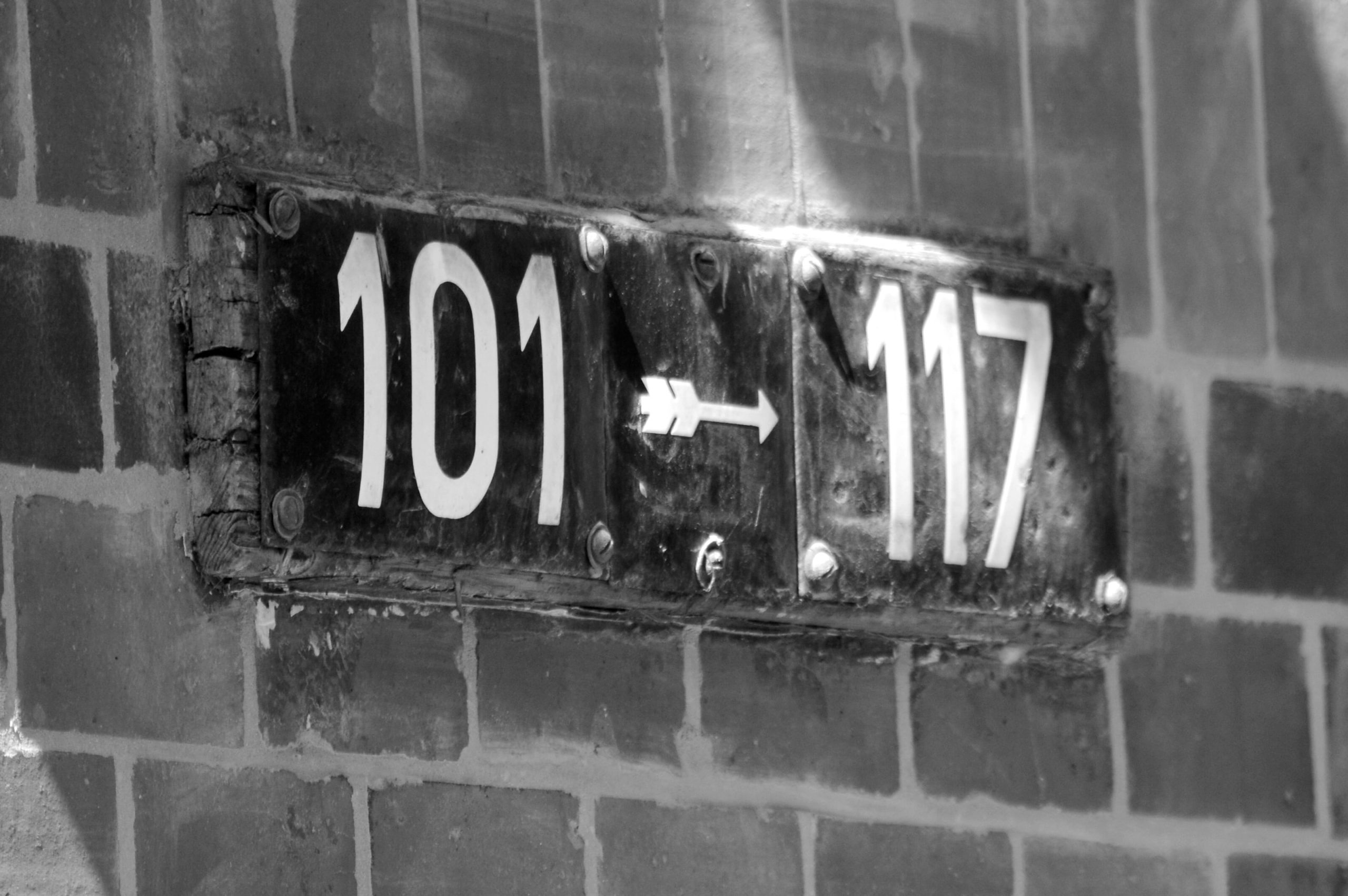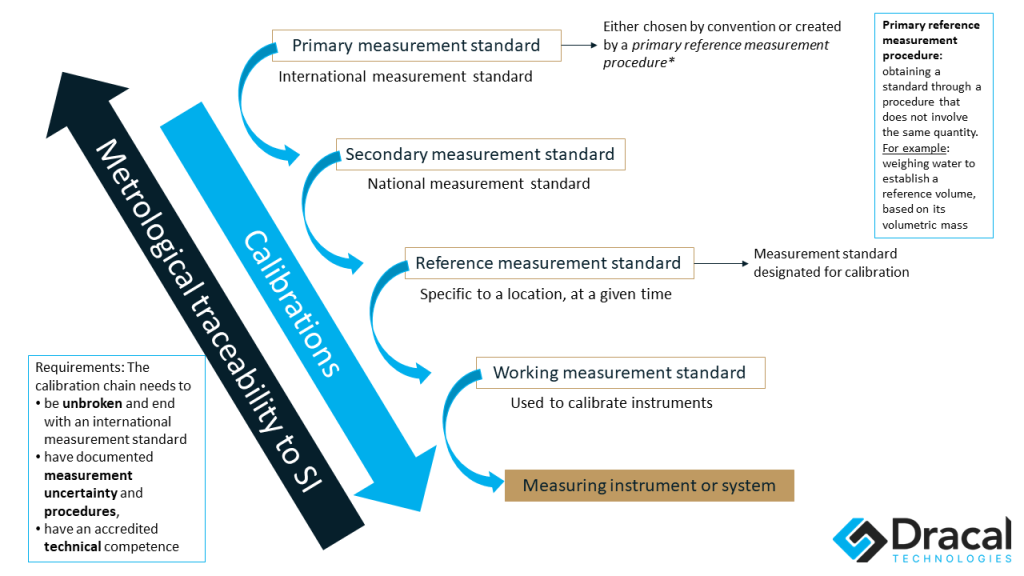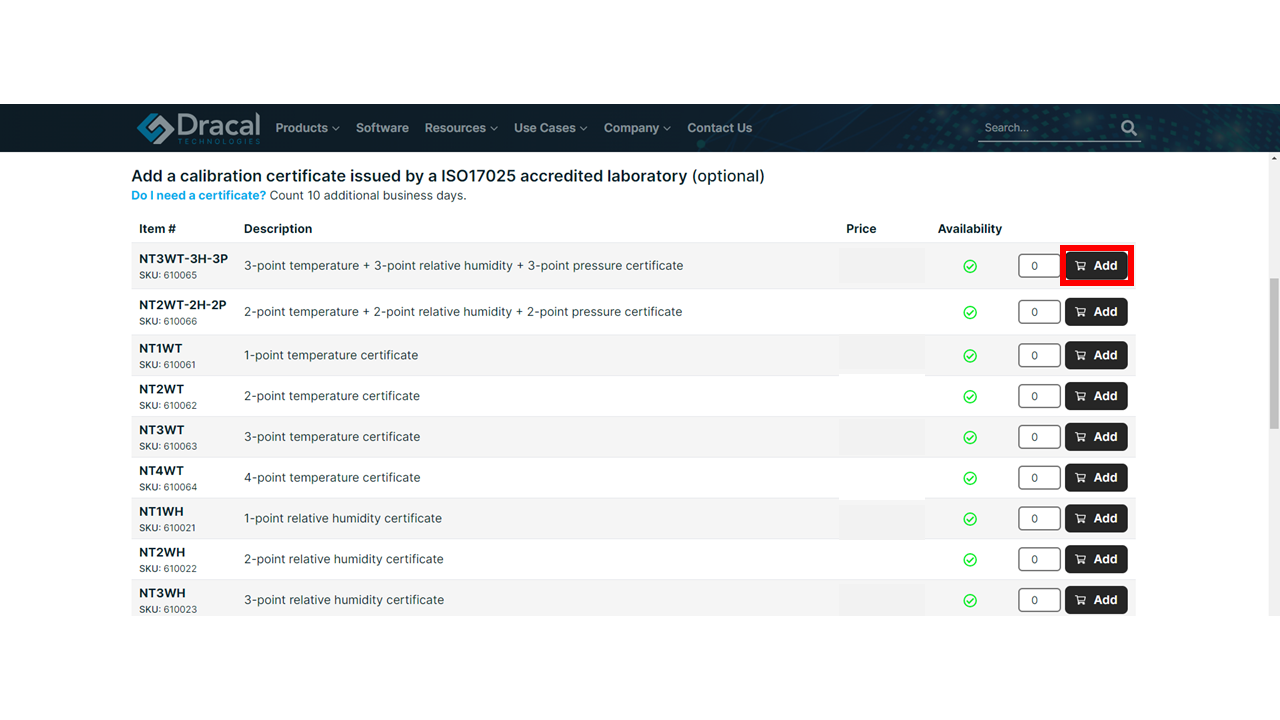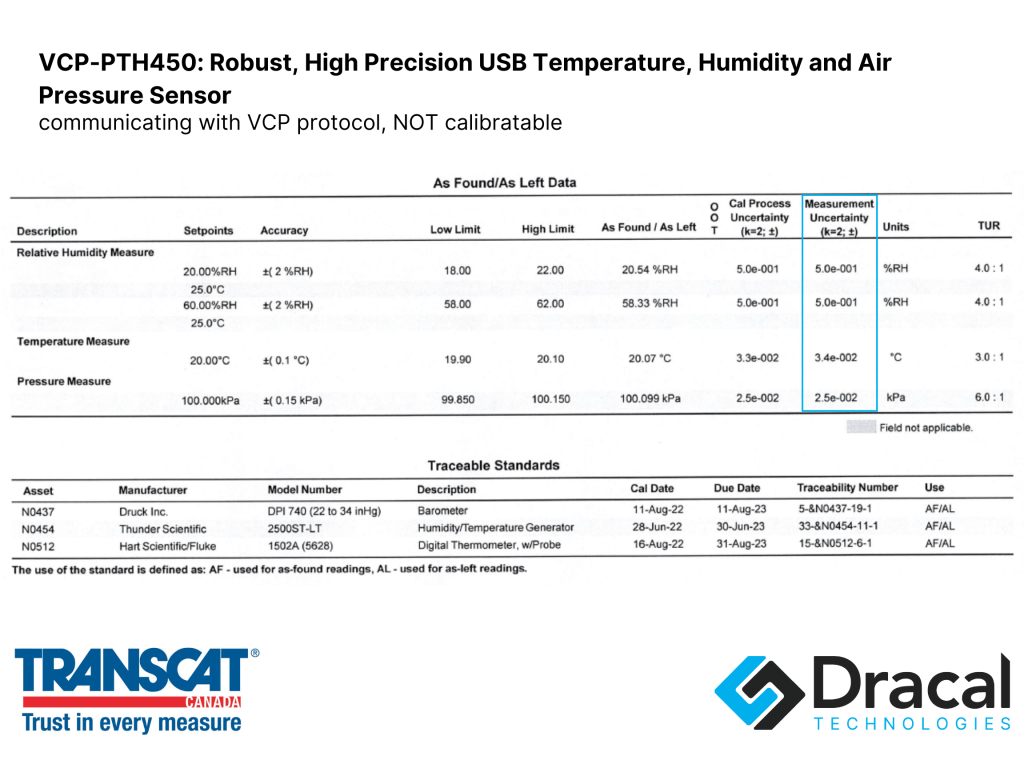Guide in 10 questions on Dracal instrument calibration (adjustment) and its benefits

In this article, we address calibratable instruments and the importance of considering them when choosing an instrumentation solution. Acquiring a calibratable instrument offers several advantages, including the ability to adjust it either by a calibration laboratory or by the user, ensuring accurate measurements throughout its lifespan. We also discuss the calibration of Dracal instruments upon delivery and the possibility of self-calibration.
- 1. What is a calibratable instrument (-CAL option), and why should I consider this option?
- 2. Are all Dracal instruments calibrated upon delivery?
- 3. Is calibration necessarily traceable to the International System of Units (SI)?
- 4. How to proceed with the purchase of an ISO17025 certificate? Do the certificates include measurement uncertainties?
- 5. I have a reference or an instrument with which I want to adjust the Dracal instrument. Can I calibrate my Dracal instrument myself?
- 6. How can I ensure the calibration is accurate?
- 7. How often should USB sensors be calibrated to maintain accurate measurements?
- 8. How can Dracal instruments be recalibrated?
- 9. Do I have to deal with Dracal whenever I want to calibrate/recalibrate the instrument?
- 10. Dracal, can I return my instruments to you for recalibration?
1. What is a calibratable instrument (-CAL option), and why should I consider this option?
All instruments can be calibrated in the strictest sense, which involves comparing an instrument to a reference. In common usage, calibration also includes the adjustment phase, which corrects the instrument's measurement to make it more accurate. At Dracal, when we talk about calibration, we use the definition in common usage: comparison and correction.
Acquiring a calibratable measuring instrument (-CAL option) offers several advantages. The main advantage is that a calibration laboratory or the user can adjust it. Calibration extends the instrument’s lifespan by ensuring more accurate measurement readings.
2. Are all Dracal instruments calibrated upon delivery?
We source factory-calibrated quality sensors from the manufacturer for USB instruments containing a sensor (PTH series, TRH series, SPECTRUM100, VOC100, TMP125, BAR20). During the assembly of our instruments, we verify each unit in our facilities against a reference value and keep a record of the reading.
Universal converters for thermocouple probes (TMC series) and RTD probes (RTD series) are calibrated at 0°C at the Dracal production facility.
The DXC220 is calibrated in our facilities using certified and traceable gas.
Factory calibration is not performed by an ISO17025-accredited entity, whether at Dracal or by component manufacturers. However, if your industry requires an accredited certification, obtaining an SI traceable certificate issued by an ISO17025-accredited laboratory is possible. The procedure will be explained in a later question.
3. Is calibration necessarily traceable to the International System of Units (SI)?
The short answer is no. To ensure SI traceability, calibration must be performed against a working standard, corresponding to the last step in the traceability chain.

A traceability certificate assures the buyer that a measuring instrument complies with the manufacturer's accuracy standards by comparing it to a chain of references. It is issued by laboratories certified by the CNRC (in Canada) or the NIST (in the United States). These laboratories are also accredited with ISO17025.
It is possible to calibrate a device against a reference other than a traceable SI standard if industry standards do not require it.
4. How to proceed with the purchase of an ISO17025 certificate? Do the certificates include measurement uncertainties?
Several questions may arise when purchasing a Dracal USB sensor. One of them is whether an ISO17025 certificate is necessary. If the answer is yes, when choosing your instrument, at the bottom of the options page, you can select the desired certificates.

When placing the order, you choose the desired number of calibration points. We will then contact you by email to obtain the exact points, and the products will be sent to the partner laboratory. After issuance, the certificates and products are packaged together and shipped.
Here is an example of a calibration certificate Transcat Canada, our partner laboratory, has issued. The measurement uncertainties are clearly indicated.

5. I have a reference or an instrument with which I want to adjust the Dracal instrument. Can I calibrate my Dracal instrument myself?
Certainly! The user can calibrate an instrument with the -CAL option using DracalView or the dracal-usb-cal command-line tool.
DracalView, our graphical user interface, allows for calibration using a three-point mechanism. Here are some links to quickly understand the procedure, watch a video on best practices, or read some tips regarding using the tool.
However, beware that entrusting calibration to just anyone is not recommended. The risks of obtaining less accurate measurements are very high if the calibration is not done correctly. We believe in our customers' skills, so we developed this tool. However, it remains a double-edged sword.
6. How can I ensure the calibration is accurate?
The three-point calibration mechanism by the user involves calculating the calibration curve using a polynomial equation. This equation is nonlinear and has the advantage of being accurate at the three calibration points. The adjustment calculation includes up to 6 significant figures to maintain the precision of your measurements.
The calibration points are directly stored in the device's firmware, so a calibrated instrument remains calibrated regardless of the tool used to access its readings. These points remain valid irrespective of the input unit. This feature greatly simplifies the use of our sensors compared to manual calculation-based calibration, which would need to be repeated every time the sensor is disconnected.
7. How often should USB sensors be calibrated to maintain accurate measurements?
The calibration frequency of a measuring instrument depends on several factors, such as the type of instrument, its conditions of use, its usage history, and the specific application requirements. The ISO17025 standard recommends manufacturers and calibration laboratories not to specify a particular calibration frequency since the end user possesses the most information to determine the terms for recalibration.
It is important to note that the calibration frequency may vary depending on each organization's needs and accuracy requirements. Therefore, developing a calibration plan based on risk assessment, analysis of metrological requirements, and appropriate recommendations is essential to ensure accurate and reliable measurements.
8. How can Dracal instruments be recalibrated?
The recalibration of a Dracal USB sensor with the -CAL option follows the same procedure as the initial calibration, except for a preliminary step of deleting the already entered calibration points.
9. Do I have to deal with Dracal whenever I want to calibrate/recalibrate the instrument?
No, because the user's three-point calibration mechanism is accessible to everyone. Customers with the necessary setup and skills can simply follow the procedure.
It is also possible to send your Dracal measuring instruments to one of our partner laboratories for recalibration or any other laboratory of your choice. However, it is recommended that you contact the laboratory beforehand to conduct a feasibility analysis based on their instrumentation.
If you wish to work with a laboratory unfamiliar with our sensors, feel free to contact them so that we can help them evaluate their calibration capability with our products. Indeed, some laboratories may encounter difficulties with calibrating atmospheric pressure in some of our instruments due to the location of the barometer.
10. Dracal, can I return my instruments to you for recalibration?
Certainly! If it is more convenient for you to send them back to us, you just need to order the calibration certificate on the product page (without the product) and send it to us. We will forward your sensor to Transcat Canada, our partner calibration laboratory, and we will return it to you with its certificate within 10 business days.
Conclusion
Acquiring a calibratable instrument (-CAL) offers considerable advantages, including maintaining accurate measurements throughout the instrument's lifetime. The Dracal solution allows users to calibrate their instruments using the graphical interface, DracalView. For those who prefer to entrust calibration to a laboratory, we partner with ISO17025-accredited laboratories. Feel free to contact us for additional information or to send your instruments for recalibration.